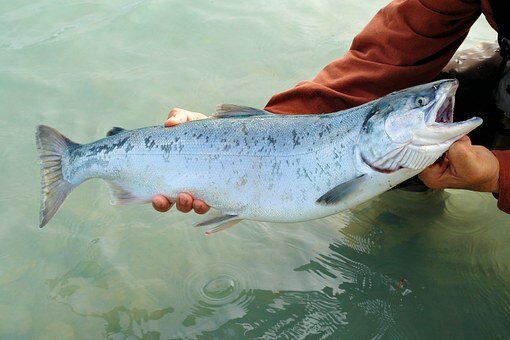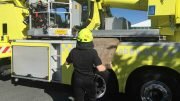Ministry of Fisheries: High risk of wild fish dying of salmon lice between Karmøy and Sotra
Ministry of Food and Industry estimates that there is a high risk that wild fish can die as a result of salmon lice on the coastline between Karmøy and Sotra.
The Ministry is in the process of assessing in which areas along the coast salmon and trout farming may be allowed to expand and where it should not.
At the end of May, a panel of experts came up and now the Ministry has published its preliminary assessments based on this. The current coastlines have been categorized as red, yellow or green based on the risk. However, a final decision will not be made before autumn.
Signal to the fish farmers
– With this colour coding we provide an important basis for this autumn’s assessment of salmon and trout farming. It is also a clear signal to the fish farmers about how we assess the possibilities for expansion, as the situation is right now, says Minister of Fisheries, Per Sandberg (Frp).
The stretch between Karmøy and Sotra is the only one marked red in the preliminary assessment. There is, however, no downward adjustment of capacity in this area. Any downward adjustments of the production capacity will not occur before 2019.
Can be offered expansions
The stretch from the Swedish border to Jæren, as well as all areas north of Helgeland, is marked as green. If this is the situation also in the autumn, these areas will be offered a 6 percent capacity growth.
Ryfylke, the stretches between Nordhordland and Stadt, Stadt and Hustadvika, Nordmøre to Sør-Trøndelag and Nord-Trøndelag including Bindal are marked as yellow.
In some areas, the uncertainty surrounding the reviews is high. In these areas, the ministry warns that it can later be assessed whether, based on a precautionary principle and a comprehensive socioeconomic assessment, deviation from the expert group’s assessment might be made.
Facts about the Salmon Louse, (Wikipedia)
The salmon louse, Lepeophtheirus salmonis, is a species of copepod in the genus Lepeophtheirus.
It is a sea louse, a parasite living mostly on salmon, particularly on Pacific and Atlantic salmon and sea trout, but is also sometimes found on the three-spined stickleback. It lives off the mucus, skin and blood of the fish.
They are natural marine parasites of fish such as adult salmon. Once detached they can be blown by wind across the surface of the sea, like plankton.
When they encounter a suitable marine fish host they may adhere themselves to the skin, fins, the gills of the fish, and feeding off the mucus or skin. Sea lice only affect fish and are not harmful towards humans.
Salmon lice are natural ectoparasites of salmon, in the 1980s high levels of salmon lice were observed on Pink salmon smolts. Salmon lice are found in Pacific and Atlantic Oceans, they infect Pink salmon, Atlantic salmon, and Chum salmon.
© NTB Scanpix / Norway Today





